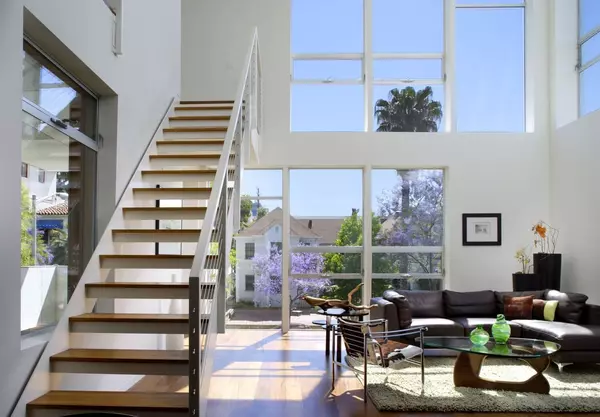Illinois is Struggling in Affordability and Homebuilding: Can Governor Pritzker Revive the Market?
Illinois’s housing market reflects the state’s broader economic challenges—steady demand, limited new construction, and affordability that’s slipping for many middle-income buyers.
The state earned a C on Realtor.com® State-by-State Housing Report Card, part of the Let America Build campaign that evaluates how effectively states are balancing housing costs with supply growth.
But this is the situation in most of the country. Hoping to spur on action, President Donald Trump recently put pressure on large homebuilders to increase construction nationwide. In a post on his Truth Social platform in early October, he accused major builders of hoarding lots to prop up prices — likening them to OPEC, which restricts oil output to maintain high prices.
“They’re my friends … but now, they can get Financing, and they have to start building Homes. They’re sitting on 2 Million empty lots, A RECORD,” Trump wrote. He urged Fannie Mae and Freddie Mac to intervene and “get Big Homebuilders going” in order to “restore the American Dream.”
Despite being one of the largest housing markets in the Midwest, Illinois continues to lag its neighbors in new development.
A slow recovery for affordability
Illinois earned a total score of 50.1, placing it squarely in the middle of the national rankings. The median listing price stood at $316,613 in 2024, while the median household income was $79,180.
Homebuilding activity in Illinois remains sluggish. The state accounted for just 1.3% of all new home permits nationwide in 2024 despite representing about 3.7% of the U.S. population, yielding a weak permit-to-population ratio of roughly 0.42. The new construction premium—the price gap between new and existing homes—was 75%, indicating that most new inventory is concentrated in higher-end segments rather than attainable housing for middle-income families.
Regional context and national contrasts
According to the most recent Realtor.com New Construction Insights, the Midwest has maintained one of the country’s lowest housing cost structures, but Illinois is an exception to that trend. While nearby states such as Indiana and Missouri are keeping affordability steady through consistent homebuilding, Illinois has struggled with slower permitting and less development in both suburban and rural areas.
Nationally, the median listing price for new homes was $450,797 in mid-2025, virtually unchanged from the year before, while resale prices climbed 2.4%. That narrowed the national new construction premium to just 7.8%, the lowest level in the dataset’s history. But in Illinois, a combination of high property taxes, older housing stock, and lengthy local approval processes has kept new supply limited, driving the premium higher and keeping prices elevated relative to incomes.
“America is short more than 4.7 million homes, and every new home built helps close that gap while fueling local economies," says Shannon McGahn, executive vice president and chief advocacy officer at the National Association of Realtors®.
"NAR research shows that the U.S. has faced a persistent housing shortage for more than a decade, driving up prices and limiting options for buyers. Expanding housing supply creates jobs, supports small businesses, and affords families the opportunity to build generational wealth.”
Governor Pritzker’s plan to expand supply
So far in 2025, Governor JB Pritzker has advanced several housing-related legislative measures, including SB0039, which exempts nonprofit-built tiny homes for veterans from certain building code requirements; HB3050, which extends the permit window for swimming pool construction; and HB3616, which expands statewide data collection on housing affordability.
He has also highlighted recent progress on the ground. In November, Gov. Pritzker joined the Illinois Housing Development Authority (IHDA), local officials, community members, and construction and labor representatives to celebrate the grand opening of the Community of Sunnybrook, a $20 million development bringing 40 new rental homes to working families in Madison County. The project is billed as an investment in accessibility—to housing, jobs, and education—and part of a broader revitalization effort in the region.
“Sunnybrook is providing 40 new units to the people of Alton, making it easier for families to lay down roots and workers to contribute to the local economy,” Pritzker said at the event. “More than just a housing development, this is an engine of community revitalization. We’re working to make life more affordable for working families, foster growth and opportunity, and contribute to the culture and character of our state. Our communities have more demand, more opportunity, and more room for new housing—and it’s on us to deliver.”
The National Association of Home Builders’ Blueprint to Address the Housing Affordability Crisis recommends many of the same strategies Illinois is pursuing: eliminating excessive regulations, improving access to financing, and investing in workforce training to expand construction capacity. NAHB emphasizes that “the only sustainable path to affordability is building more attainable homes” across income levels.
Illinois’s C- grade underscores how much room there is for improvement—but also how much potential remains. With strong infrastructure, available land, and a central location, the state has the tools to become a leader in balanced growth. The question is whether the Pritzker administration’s reforms can translate into faster permitting, more diverse housing stock, and a long-term rebound in affordability.
This article was produced with editorial input from Dina Sartore-Bodo and Gabriella Iannetta.
Categories
Recent Posts










GET MORE INFORMATION

Stevan Stanisic
Real Estate Advisor | License ID: SL3518131
Real Estate Advisor License ID: SL3518131
